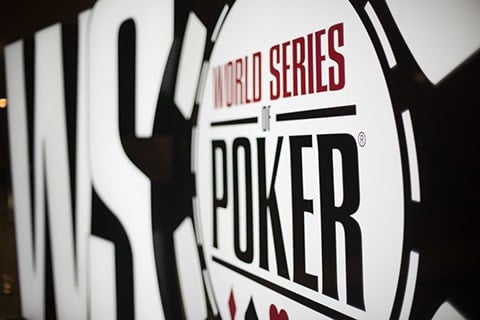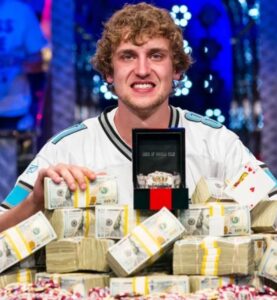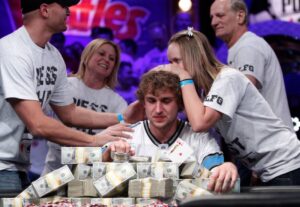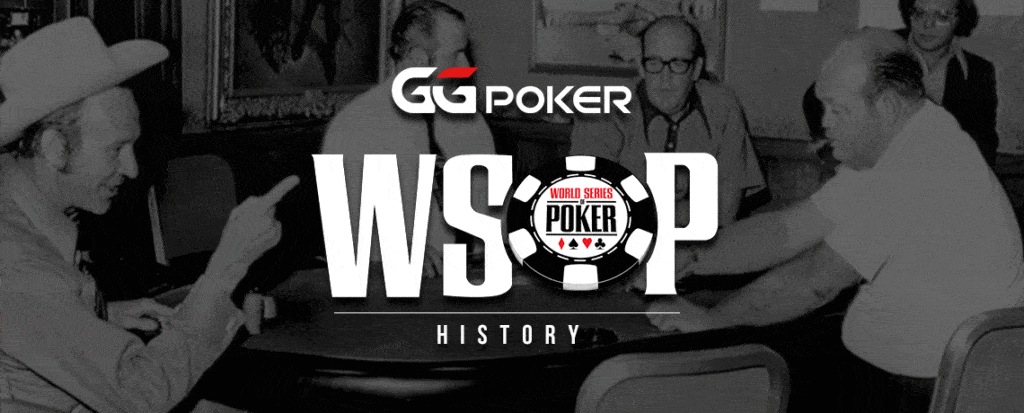In 2013, the World Series of Poker Main Event was won by an aggressive American player who would go on to become a well-recognized and much-respected member of the poker community. Over the previous few years, winners such as Jonathan Duhamel (2010), Pius Heinz (2011), and Greg Merson (2012) had been successful, even lauded at the time, but none of them went on to command the interest of poker fans as much as the 2013 World Champion did.
JOIN THE POKER TABLES AT THE WSOP!
Preliminary Events Provide Excitement
Heading into the 2013 World Series of Poker (WSOP), there were 62 events to look forward to. Although the $1 Million entry Big One for One Drop from 2012 was not repeated, it was replaced by the $1,111 entry The Little One for One Drop, which gave $111 per entry to the charity, and a $111,111 buy-in One Drop High Roller. Tom Schneider won not one but two H.O.R.S.E. tournaments, claiming the $1,500 buy-in event for $258,960 and the $5,000-entry follow-up for a top prize of $318,955,
Following on the success of the female players in 2012, when two women almost made the Main Event final table, two other women won open bracelet events in 2013. Dana Castaneda took down the $1,000-entry No-Limit Hold’em event before Loni Harwood claimed victory in the $1,500 buy-in No-Limit Hold’em event. Harwood had a record year in 2013, cashing six times, reaching a female record of three final tables, and winning $874,698 – the most by any female player in one year in WSOP history to that point in time.
The WSOP Player of the Year was won for the second time by the Canadian poker legend Daniel Negreanu, who won the WSOP Asia-Pacific Main Event and the WSOP Europe NLHE High Roller event. He remains the only player to win the Player of the Year twice to this day, but his two bracelets in Australia and Europe represent the last ones he would win for over a decade.

Bumper Crowd Flock to the Thunderdome
While there was no million-dollar event to pique the interest of poker fans, there was a One Drop High Roller event. Costing $111,111 to play, 3% of player fees went towards the One Drop Foundation charity, a charity founded by Cirque du Soleil founder Guy Laliberté devoted to providing safe water supplies for developing countries around the globe. The event was won by Anthony Gregg, who beat Chris Klodnicki heads-up to claim the $4.8 million top prize.
Other events were won by big names, as Barny Boatman won the $1,500 NLHE Event #49 for $546,080, Kristen Bicknell – now Foxen – won the Ladies Event for $173,922, and Canada’s Mark Radoja took down the $10,000 Heads-up Championship for $336,190. Matt Ashton won one for Britain as he took home the Chip Reese trophy, capturing the title in the $50,000-entry Poker Players Championship for $1.77 million.
After over 5 weeks of some of the most incredible poker, it was time for the WSOP Main Event, and what a World Championship it was. With another vast turnout of 6,352 entries, the top 648 players would cash, with ninth place receiving $733,224 and a top prize of $8.35 million.
Former winners performed admirably in 2013’s Main Event, with Tom McEvoy, Phil Hellmuth, Dan Harrington, and Johnny Chan all reaching Day 3. Doyle Brunson cashed on Day 4 in 409th place, and the 2012 champion Greg Merson put up a strong defense of his title, finishing 167th for $42,990. All eyes were on the 2001 winner Carlos Mortensen as the Spanish player made the final 10 players, but bubbled the final table when his call with ace-nine on the turn of a board showing T-6-3-9 was the wrong choice as J.C. Tran held seven-eight for a turned straight.
Tran on Top
When the final nine players returned to the Las Vegas felt in November, it was the fourth time in six years that the youngest player at the final table would win, which raised questions about the physical stamina and fitness needed for the World Championship. Were older players now at a relative disadvantage, and should the November Nine be scrapped? A conversation that eventually led to the concept being removed in 2017.
As play at the final table began, J.C. Tran was in charge. The chip leader had 19% of the chips in play, but several other players were in close contention. Four other players held over 13% of the chips, creating a relatively even spread where it was truly anyone’s game.
First to bust at the final table was Mark Newhouse, who cashed in ninth place for $733,224, which he had already received in July. The talented player would make major headlines in 2014, but after his elimination from the final table, he drifted into the shadows. The next eliminations were David Benefield (8th for $944,650), Michiel Brummelhuis (7th for $1,225,356), and Marc-Etienne McLaughlin (6th for $1,601,024).
With five players remaining, Tran was busted in a shocking exit. The chip leader at the start of the final table had the dubious record of being the worst finisher of all the November Nine leaders when Jay Farber’s king-queen outdrew his ace-seven. A king on the flop delivering the fatal damage to Tran’s stack as the man with the most chips at the start of play left with $2.1m in fifth place.

Loosli is Too Loose
Heading into the final four, Ryan Riess from Michigan became Farber’s biggest challenger and when French player Sylvain Loosli raised all-in fairly ‘loosely’ with queen-seven, Riess, nicknamed ‘Riess the Beast’, called with ace-ten. Riess was a 65% favorite to win the hand, and the board of K-9-8-9-A eliminated the Frenchman for $2.79m as Riess slammed his hands together in glee.
Three-handed, Riess was still some way behind the amateur Farber, with the Israeli player Amir Lehavot struggling with a small stack. Lehavot shoved with pocket sevens, and Riess called it off instantly with pocket tens. Riess was starting to believe, and after the board came down Q-8-4-2-J, he was heads-up for the title.
With the crowd now almost all chanting “Riess the Beast!”, the momentum felt like it was with the professional, in an odd contrast to the amateur not having the same amount of backing despite being the underdog. It had been a hugely cosmopolitan final table, with a Dutchman, Frenchman, Canadian, and Israeli making the final seven players. Now, however, it was an all-American heads-up clash for the title, with Riess and Farber both hoping to become the world champion.

Riess the Beast
“I don’t want the fame or the prestige for myself. I just want to say that I’m the world champion,” said Farber as he began the final showdown with the lead.
“To have my poster in the Rio every time I walk in to play the Main Event for the rest of my life would be awesome.” Said Riess, who began the duel with 85.6 million chips, a short distance behind Farber on 105 million.
A crucial pot went Farber’s way when a board of 7-3-3-2-9 was bluffed on the river by Farber with six-five.
“If Ryan Riess can sniff out this bluff, he’ll have a stranglehold on this match.” Said Norman Chad on commentary.
“Really, Jay? That’s a big bet.” Riess said with queen-seven, and he folded the best hand. The chips were level again. Riess took some time to rebuild a chip lead and when he did, got it in good to take the title with king-ten on a flop of K-Q-5. Farber only had a straight draw with jack-ten, but a nine on the turn gave Farber a straight to survive yet again.

Riess had to wait but not for much longer. Getting Farber to ‘bleed chips’ in nearly every hand, Riess built up a big lead again and, this time, was looking at the ace-king of hearts against Farber’s queen-five of spades jam. Farber, with Chance Kornuth and Shaun Deeb in his corner, seemed resigned to his fate as a flop of J-T-4 robbed him of four outs. A three on the turn meant Ryan Riess only had to fade one more card, and as he sat in front of his friends and family on the rail, emotions ran rampant through him.
“Tears already in the eyes of Ryan Riess with one card to come,” said Lon McEachern, and as a four landed on the river, Riess fell to the floor, picked up by his rail as McEachern proclaimed, “The beast is best!” Ryan Riess won $8,361,570, while Farber won $5,174,357 as runner-up.
For the eighth time in 11 years, the younger player won heads-up, including the last six straight years from 2008 to 2013. ‘Riess the Beast’ grabbed gold and became one of the best representatives for the game of poker in the decade that followed his victory, playing every World Series of Poker since and being one of poker’s most humble and active ambassadors. Asked by Kara Scott about what gave him the confidence ahead of the final table to win, Riess was simplistic in his reply.
“I just think I’m the best player in the world.” He smiled.
One year later, in 2014, four more Americans would reach the final table in the world’s biggest poker tournament.
None of them would even reach the podium.
| Place | Player | Country | Prize |
|---|---|---|---|
| 1st | Ryan Riess | United States | $8,361,570 |
| 2nd | Jay Farber | United States | $5,174,357 |
| 3rd | Amir Lehavot | Israel | $3,727,823 |
| 4th | Sylvain Loosli | France | $2,792,533 |
| 5th | JC Tran | United States | $2,106,893 |
| 6th | Marc-Etienne McLaughlin | Canada | $1,601,024 |
| 7th | Michiel Brummelhuis | Netherlands | $1,225,356 |
| 8th | David Benefield | United States | $944,650 |
| 9th | Mark Newhouse | United States | $733,224 |
2012 WSOP Main Event 2014 WSOP Main Event
About the Author: Paul Seaton has written about poker for over 10 years, interviewing some of the best players ever to play the game such as Daniel Negreanu, Johnny Chan and Phil Hellmuth. Over the years, Paul has reported live from tournaments such as the World Series of Poker in Las Vegas and the European Poker Tour. He has also written for other poker brands where he was Head of Media, as well as BLUFF magazine, where he was Editor.





